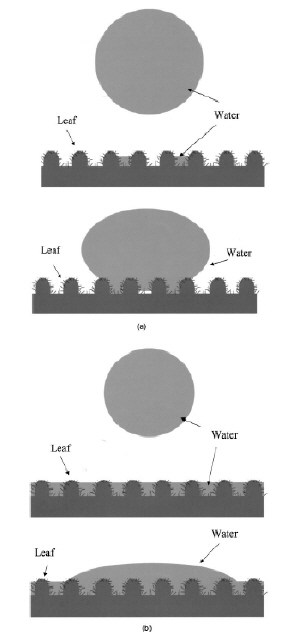Companies that make water-repellent paints, fabrics and windscreens for cars often look to the lotus leaf for inspiration. The leaf is a symbol of purity in many cultures because of its ability to remain clean: when rain falls onto a lotus leaf, the drops of water that form on the surface roll off, taking any dirt with them. However, two researchers in the US have now discovered that although lotus leaves are superhydrophobic as far as droplets of water are concerned, they are actually hydrophilic with respect to condensed water vapour (Y-T Cheng and D Rodak 2005 Appl. Phys. Lett. 86 144101).

Microscope observations reveal that the waxy surface of the lotus leaf is made of micron-sized bumps that, in turn, are covered with nanoscale hair-like tubes (figure 1). This two-fold structure traps air under any rain drops that fall on the leaf, creating a surface that efficiently repels water. However, experiments on this so-called lotus-effect have only focused on how millimetre-sized droplets behave when they encounter the leaf’s surface.
Yang-Tse Cheng at General Motors Research and Development Center in Michigan and Daniel Rodak of Ricardo Meda Technical Services, also in Michigan, began by placing a lotus leaf above a source of water vapour. After just a few minutes the water began condensing onto the leaf in small droplets. Moreover, as condensation continued, some of these droplets merged to form bigger drops that remained on the surface of the leaf — contrary to what was expected.
Cheng and Rodak say the droplets become trapped between the nano-scale hairs on the leaf. The drops then coalesce with other drops and eventually begin to fill the cavities created by the micron-sized bumps (figure 2). Moreover, any new drops falling onto the leaf can then stick to it, making the surface hydrophilic rather than hydrophobic (figure 3).
“The question now is whether truly superhydrophobic surfaces can exist,” says Cheng. “Condensation experiments like ours are crucial to understanding the wetting behaviour of surfaces and should be included in any standard evaluation of hydrophobic materials.”





